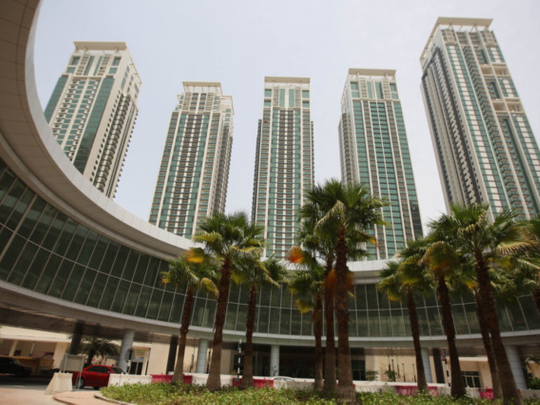
Abu Dhabi: An easing of restrictions on mortgage lending is helping more Abu Dhabi residents get into the property market. Gradually, the emirate’s realty is turning into a buyers’ marketplace.
“In 2011, most of the [residential] projects were on hold - now that projects are rolling, we have good movement in terms of buying rather than renting,” said Khalid Suliman, sales manager at Nationwide Middle East Properties, an estate agency. “With the help of financial institutes, we saw a removal of restrictions against certain job descriptions getting a loan.”
In fact, according to a report by Jones Lang LaSalle (JLL), apartment sales were up 5 per cent quarter-on-quarter, and 28 per cent year-on-year. Additionally, villa sales increased 5 per cent quarter-on-quarter, and 27 per cent year-on-year.
Suliman said such an increase in sales was promoted by developers focusing on getting people to settle down in Abu Dhabi. Having a law that bans Abu Dhabi employees from living in Dubai was another factor leading to demand.
“Since 2009, when people experienced living in their own property and the money they save in rent, they have been encouraged to buy units and live in them,” said Suliman.
Sales prices for residential units increased for a sixth consecutive quarter, with a 7 per cent rise during the second quarter of 2014, bringing the average increase during the first half of 2014 to 17 per cent, according to JLL. Such increases have been accompanied by increased supply.
JLL reported that real estate developers have pushed supply, with nearly 1,750 units completed in Al Reem Island, Danet Abu Dhabi, and Al Reef during the second quarter, bringing the total stock to around 240,000 units.
Nationwide’s Suliman says saturation is nowhere in sight. “The supply is giving exactly what the consumer is looking for. If you just dump projects into the market, and there is no one to buy, then we will have a problem. But as long as people are buying, that won’t happen.
“The good thing now is that speculators are not like before. When you launch a unit, people are not intending to gamble with their money and sell within a few months. Banks are not allowing that, and developers are not allowing that by [implementing] certain restrictions, so people who are buying now are end-users.”
Meanwhile, rental rates for prime two-bedroom apartments on Abu Dhabi Island rose by 5 per cent to reach up to Dh200,000 per annum, according to Asteco. Similarly-sized properties in the investment areas of Al Raha Beach and Saadiyat Island also hit the same levels – up 1 per cent quarter-on-quarter.
For villas, a three-bed property on Abu Dhabi Island can still be rented for an average of Dh190,000. Meanwhile, Hydra Village, and Al Reef were letting for Dh95,000 and Dh140,000 per annum respectively. Pricier units can be found on Saadiyat Island where rent for a three-bedroom residence goes up to Dh310,000 – a 5 per cent growth since Q1 2014, Asteco reported.
“Now that we’re in September, we are expecting movement to go higher. New contracts have been signed to individual employees or companies. We noticed this towards the lease sector more…We encourage people with bank facilities to buy their own homes today. We’re expecting developers to dump more investment opportunities [in the market] for investors,” he said.











